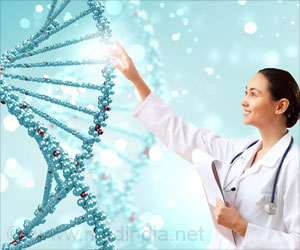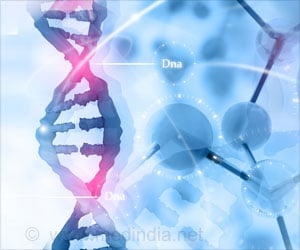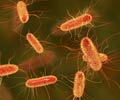- CRISPR is a gene editing tool that cuts the genome with increased precision enabling addition or removal of parts of the genome.
- CRISPR was used to incorporate a galloping horse GIF and a hand photo into live bacterial cells.
- The encoded information was retrieved from the bacterial cells by sequencing with an accuracy rate of 90%.
What is CRISPR?
CRISPR stands for Clustered Regularly Interspaced Short Palindromic Repeats. The term “CRISPR” generally refers to the entire CRISPR-Cas9 system, which may be programmed to target specific DNA sequences and edit at precise locations. Cas-9 is an enzyme that binds to DNA and cuts it. CRISPR is a set of DNA sequences that tells the Cas9 where exactly to cut. This CRISPR- Cas9 system is a major advancement in the field of genetic engineering which now makes gene editing all the more simpler and precise. CRISPR was originally identified in bacteria in 1987. It is part of an integral defense mechanism in bacteria. When a bacteria is subjected to a viral attack, the bacteria retains parts of the viral DNA and incorporates that into its own genome. This way, on later infection by the same virus, the Cas proteins recognise the saved sequence and cut the viral DNA, thereby stopping the virus attack.How was Digital Information Introduced into Bacterial Cells?
Researchers for the first time have created a living library in E.coli. Living, because while previously data was stored in synthetic DNA, here the group has incorporated bits of DNA encoded with photos and a GIF of a galloping horse into live bacteria.How was the Digital Data that was Added into Bacteria Retrieved?
The bacterial cells were allowed to multiply and the the bacterial DNA was sequenced (reading of nucleotide sequences using advanced tools). Using the pixel-nucleotide code, the same images were reconstructed with about 90% accuracy. The images included a picture of a hand and a GIF of a galloping rider and a horse, taken by English photographer Eadweard Muybridge in the 1870s.Why Store Data in DNA?
While the cost of developing these DNA storage systems is very high, they provide huge prospects. When stored appropriately in cold and dry conditions, the DNA can keep data intact for over 100,000 years. Also since some bacteria can withstand high temperatures and explosions, the data is offered extra protection. However, storing the data in live bacterial cells is debateable since the integrity of the data stored may be lost as a result of mutations in bacteria.All this makes one wonder; was all of this just done for fun, because we have the technology to do so?
Apparently not, as Seth Shipman, a geneticist at Harvard points out “We encoded images and a movie into DNA in a living cell which is fun, but it’s not really the point of the system, what we’re trying to develop is a molecular recorder that can sit inside living cells and collect data over time.”
References:
- Shipman, S. L., Nivala, J., Macklis, J. D., & Church, G. M. (2017). CRISPR–Cas encoding of a digital movie into the genomes of a population of living bacteria. Nature. doi:10.1038/nature23017











